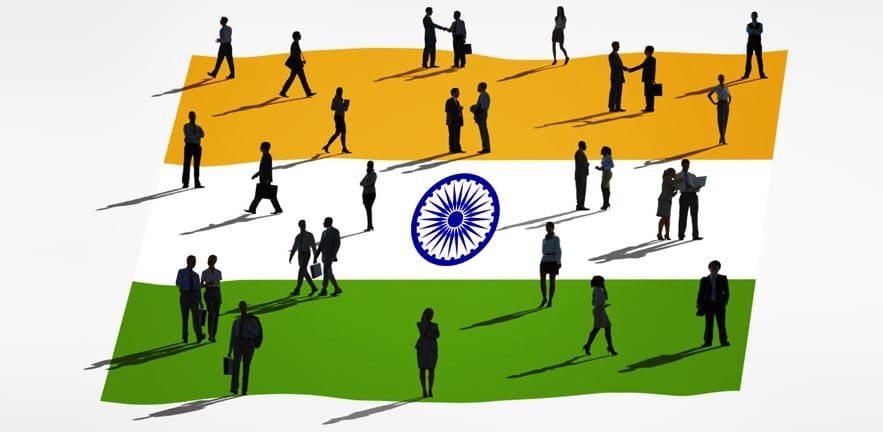
by Professor Jaideep Prabhu, Jawaharlal Nehru Professor of Indian Business & Enterprise and Director of the Centre for India & Global Business

In 2015, several Indian companies are doing phenomenally well – not only in emerging markets, but in developed ones too. In fact, some Indian firms have seized their opportunities so quickly that for the last decade they have consistently made up one in five of BCG’s Global Challengers list of top 100 high growth global companies Some, indeed, have even headed up turnarounds, such as Tata Motor’s acquisition of Jaguar Land Rover.
So what is going on? It wasn’t so long ago that many commentators thought Indian firms were uncompetitive and lacking in ambition – and singularly ill-equipped to deal with multinationals on their patch. These firms didn’t have the decades of experience and brand of Western giants such as GE and IBM, so how did they get a foothold in the global market so quickly?
To find out, I, and my fellow researchers S. Banerjee and R.K Chandy, studied 116 privately owned Indian firms on the Bombay Stock Exchange and, as the UK’s economy is roughly the same size as India’s (adjusting for PPP), compared these firms with 100 FTSE companies.
What we found was that where Western firms have extended their reach through direct experience – a US firm, say, might start up in the UK and then use the knowledge gained there to extend to the Netherlands or Belgium – Indian firms were able to have the same success in developed countries through indirect experience.
So who are the Indians learning from – and how are they doing it? We identified three ways.
First, we found that in the case of some companies, this indirect experience comes from the experience of their CEOs, who have worked with other firms in established markets – the Indian firms have a top man or woman who brings that knowledge. For instance, Cyrus Mistry, CEO of the Tata Group, is a fellow of the UK’s Institution of Civil Engineers and co-chairs the India-US CEO forum, and Mahindra boss Anand Mahindra is on his alma mater Harvard Business School’s Global Advisory Counsel. Such CEOs use their experience to benchmark their firms against foreign companies and markets.
Successful Indian firms have also learned indirectly from three types of competitors: multinationals who came to India immediately after the economic liberalisation of the country in 1991; Indian firms such as Tata whose many business arms have used the deregulation of markets and reduction of taxes to blaze the trail, acquiring Tetley tea, Daewoo, Jaguar and Corus; and the best players globally in their field.
The third source of indirect learning by Indian firms comes from the other companies within their business group, which is a network Western firms do not have but which is often found in emerging countries. Business groups – Tata is the best example – are made up of individual member companies which own shares in each other and share management expertise. So Tata Motors, for example, might learn good M&A practice from Tata Tea.
The success of Indian firms in developed markets has confounded a lot of critics who argued against the opening up of the economy. Many feared reducing import tariffs and encouraging foreign investment would see Indian firms slaughtered by international competition. But the reverse happened – some Indian firms leveraged against their experience of the local markets and were protected by local knowledge and their own established domestic brands, which gave them a buffer.
It must be admitted India also got lucky with IT. As Thomas Friedman suggested in his book The World is Flat, a lot of Indian companies formed in the 1980s were able to “bootstrap” by doing bodyshop work for the emerging American computer firms. More importantly, however, these “born global” Indian firms learn HR practices, service practices, ISO standards, quality control and training from the West. And other Indian firms also learned in turn by observing these Indian IT trailblazers.
So, like China, which liberalised its economy in 1978, and other emerging economies such as Russia and Turkey, whose firms also appear regularly on the BCG list, India has enjoyed phenomenal economic growth. What are the implications?
The main one seems to be that economies that remain closed should not fear opening up. It’s not a recipe for disaster and will actually make your domestic firms up their game.
Then there are the fears of “brain drain”. But these fears too appear unfounded as you might in fact get “brain gain”. Yes, young people do leave, but they go to learn – and if their home market is vibrant, as it is in India, they will and do return and bring their skills back with them.
The other significant positive implication is for the rest of the world. In the developed markets there has been a historic fear of immigrants but universities in North America, UK and Australia enjoy a great source of income from students from Latin America and Asia. These people can be universities’ and countries’ ambassadors. Look at Silicon Valley – an American phenomenon, but 40 per cent of companies there were set up by Chinese and 30 per cent by Indians.
In the long term you are creating soft power and trade opportunities, and thus the opportunities continue to expand for Indian companies that can use all this experience to groom their own people for leadership. This will grow their firms, and the Indian economy, still further.

